Timeline
1900
Belfields School, Victoria Avenue was built.
The
Baptist
chapel,
in
Milton
Road,
was
erected
at
a
cost,
including
Sunday
school,
vestries
&c.
of
£9,800.
It
consisted
of
nave,
transepts and a polygonal chancel for the organ and choir gallery.
Southend-on-Sea
Cricket
Club
established
1874
an
inspiring
Cricket
Club,
based
in
Southchurch
Park.
There
has
been
cricket
played
here since 1900.
Southend
in
the
News.
The
"Southend
Telegraph"
newspaper
published
its
first
issue
on
March
31st,
1900.
It
was
renamed
the
"Southend Pictorial Telegraph" in 1922, and later that same year, was renamed the "Southend & County Pictorial."
Leigh
fire
service.
Leigh
had
suffered
a
number
of
fires
in
it's
boundary
over
the
years.
So
it
was
no
surprise
in
1900
the
Leigh
Ratepayers
Association
decided
on
better
protection
for
the
town,
purchasing
fire
fighting
equipment,
15
men
took
up
the
role,
and
on
10th
May
1900
the
Brigade
was
fully
constituted.
With
the
number
of
wooden
structures
around
it
would
not
belong
before
their
services would be called upon.
Smerdon's
arrives.
George
Smerdon
arrived
in
Westcliff
this
year
setting
up
business
as
a
furniture
retailer,
providing
quality
goods
from Hamlet Court Road. In 1928 his four sons joined their father and the business became Smerdon & Sons Ltd.
Dairies
established.
The
town's
supply
of
milk
became
established
this
year
with
the
arrival
of
Mr
H.
G.
Howard.
Taking
over
premises
on
the
London
Road,
other
local
dairies
joined
the
Howard's
brand
to
make
it
even
stronger
as
a
business.
Today
the
dairy
has long gone, replaced by flats suitably named after the former business.
Sutton
Road
Cemetery
opens.
Formerly
Jordan's
Farm,
the
town's
main
cemetery,
identified
in
1895, opened by 1900 and began to accept admissions.
New
Pub.
Prittlewell
Village
was
well
served
by
a
few
pubs
at
the
turn
of
the
century,
including
the
Spread
Eagle
and
the
King's
Head.
Around
the
corner
in
North
Road
a
new
hostelry
opened
and
is
still
serving
beer
today,
the
Nelson
a
large
pub
in
size
heralded
the
spread
of
urban
living
towards the west and into Westcliff-on-Sea.
Southend
calling.
The
first
telephone
exchange
in
Southend
was
opened
in
1900,
and
was
set
up
in
one
small
room
of
a
private
house
at
the
corner
of
Clarence
Road
and
Weston
Road
(An
automated exchange was built in 1929 near the Cricketer's Inn).
Huge
fire.
The
centre
of
Southend
from
the
High
Street
to
Weston
and
Clarence
Roads
was
hit
by
a
massive
fire
in
July
which
destroyed
a
number
of
buildings.
The
fire
started
in
Wallis's
ironmongery
stores,
due
to
the
volatile
reaction
of
three
benzoline
oil
barrels
being
affected
directly
by
the
sun.
They
eventually
exploded
engulfing
the
premises
in
flames.
It
did
not
help
that
the
next
door
premises
was
of
similar
trade
and
its
contents
too
helped
keep
the
fire
burning
and
spreading.
Weston
Chambers,
in
Weston
Road,
made
up
of
a
few
public
offices
such
as
the
clerk
to
the
local
magistrates
and
the
Southend
Unionist
and
Conservative
Club
was
soon
fully
alight.
Many
valuable
records
were
lost.
A
number
of
businesses
were
either
completely
destroyed
or
partly
damaged
due to the low water pressure afforded to the firemen.
1901
Key
Southend
Businessman
born.
4
Jul
1901.
Eric
Kirkham
Cole
was
born
in
Westcliff-on-Sea.
He
founded
Ekco
Ltd
which
became
essential
for
the
British
war
effort
and
key
as
a
major
employer.
The
1950s
saw
the
company
employ
in
excess
of
5,000
people.
The
Prittlewell Priory used to host a display of products from this famous factory including radios and televisions.
College
foundation
stone
laid.
A
key
piece
in
the
development
of
the
town's
educational
future
was
achieved
in
1901
with
the
laying
of
the
foundation
stone
by
Lord
Avebury.
Starting
the
build
for
Southend's
Technical/Municipal
College.
Education
throughout
the
town's
history
has
always
been
important,
reflected
in
the
retaining
of
4
key
grammar
schools.
The
development
of
South
East
Essex
College
and
the
ongoing
development
of
the
Essex
University
in
the
town.
Maybe
this
stone laying started the ball rolling...
First
Trams
run
in
Southend.
The
terminus
was
outside
the
Middleton
Hotel
next
to
the
Luker
Brewery,
which
would
have
been
then
Whitegate
Road,
but
now
known
as
the
High
Street.
The
first
routes
were
to
Southchurch,
July
extended
to
St
Clements
Church
in
Leigh,
Prittlewell
and
the Cricketers Pub in Westcliff. There was also a route from the Kursaal to Southchurch Road.
Tower
Hotel
arrives.
On
Alexandra
Road,
the
building
that
became
a
hotel
in
1923
started
life
in
1901
as
a
unique
gentlemen's
residence
called
"Taranaki."
The
venue
since
1923
went
under
various
names
but
today
is
more
commonly
recognised
as
the
Tower
Hotel.
The
Kursaal
is
built
as
a
challenge
to
Blackpool's
Winter
Gardens.
The
Kursaal
was
built
named
after
Ostend's
pleasure
palace.
The
dome
of
the
Kursaal
became
known
as
the
place
to
meet
your
future
love
and
many
a
marriage
evolved
from
this
first
encounter
under
the
dome.
It
was
opened
on
24th
July
1901
by
Lord
Claud
Hamilton.
Clifton
Jay
Moorhouse
became
the
first
of
a
Moorhouse
dynasty
to
take
the
reigns
at
this
elaborate
fun
park.
He
further
opened
this
year
an
amazing
ball
room
capable
of
holding
some
2,000
dancers,
the
dance
floor
was
built
on
some
8,000
carriage
springs
the
cost
of
this
venture was £3,000 and quickly recouped the expense for the new owner.
The
church
of
St
Mark,
with
a
hall
and
hostel
adjoining,
situated
at
the
corner
of
Princes
Street
and
Hamlet
Court
Road,
was
purchased
from
the
Baptists,
and
later
considerably
altered. The church was a chapel of ease to the church of St John the Baptist.
Havens
of
Westcliff
established.
Located
on
Hamlet
Court
Road
this
retail
department
store
retains
its
old
world
charm
while
ensuring
its
business
reflects
the
times,
as
popular
as
the
store
is
to
visit.
The
building
we
all
probably
remember
opened
in
1935,
in
May 2017 the store closed and sales went online.
Population of Leigh reached 3,667.
1902
May.
The
Lord
of
the
Manor
of
Prittlewell
and
Milton
Hamlet,
Mr.
Daniel
Robert
Scratton,
whose
family
had
been
connected
with
Prittlewell
Priory
since
1673,
died
aged
73
in
Devon.
He
was
chairman
of
Rochford
magistrates,
a
member
of
Rochford
Board
of
Guardians and Master of the Essex Union Hunt.
St
Alban's
Church
is
complete.
St
John's
Road
in
Westcliff
saw
the
completion
of
St
Alban's
Church,
(so
the
books
say).
The
church
however,
says
something
else
a
plaque
on
its
west
facing
wall
says
1898.
Could
the
church
have
taken
four
years
to
build?
The
tin
hut
to
the
rear
of
the
church
was
indeed
the
original church and still stands today and is regularly used by the community.
The West Cliff Hotel suffers a bad fire on 26th June 1902.
First
bandstand
erected
on
the
cliffs.
The
current
bandstand,
sited
in
Priory
Park
is
a
modern
relation
to
the
original
version
sited
opposite
Prittlewell
Square
on
the
cliffs.
The
bandstand
always
was
and
is
an
English
institution,
by
sea
or
in
land.
Southend's
bandstand
became
very
popular
drawing
hundreds
to
listen and dance to music of the time.
Water-Chute
built.
The
corporation
always
wanting
to
expand
its
tourist
offer
built
a
water
chute
east
of
the
pier
entrance
complete
with
basin
which
would
be
filled
with
seawater.
This
venture
proved
to
be
a
disaster
and
was
dismantled
in
1904,
leaving
the
basin
intact, which would later be used as a home for replica ships such as the Golden Hind.
Westcliff
Hotel
arrives.
Southend
was
rapidly
expanding
its
tourist
offer
which
naturally
attracted
the
demand
for
hotels
that
could
cope
with
the
longer
stay
visitor.
Westcliff
had
the
space
and
along
it's
shore
frontage
and
just
up
on
the
Palmeira
Parade
appeared
an
elaborate
hotel
designed
by
J.
Edmondson
called
the
Palmeira
Hotel.
It
boomed
up
until
the
60's,
when
the
resort
found
it's
legs
and
realised
it
catered
mainly
for
the
day
visitor.
Therefore,
this
type
of
huge
hotel
had
had
its
day.
In
1978
it
was
demolished,
to
be
replaced by retirement flats.
Westcliff
Baptist
Church
was
founded
in
1896
by
Rev.
William
Frith,
and
met
in
an
iron
building
on
the
south
side
of
Station
Road,
Westcliff.
In
1902
the
church
moved
to
a
new
building
in
Valkyrie
Road,
but
after
only
a
few
months
"there
was
a
split
there".
The
church
in
Valkyrie
Road
was
put
up
for
sale;
it
became
occupied
by
Westcliff
Free
Evangelical
Church,
much
later
to
become
the
HARP
homeless
centre.
For
a
time
after
leaving
Valkyrie
Road,
services
were
held
in
the
home
of
Mrs
Binstead
of
Oakhurst,
Crowstone
Road,
Westcliff,
and
on
20
May
1903
Westcliff
Park
Tabernacle
was
opened
in
an
iron
building
on
the
north
side
of
London
Road
opp.
Crowstone
Road.
A
plot
of
land
on
the
S.
side
of
London
Road
[the
present
site]
was
purchased
from
the
Chalkwell Hall Trust in 1914 for the erection of a permanent church building.
Southend
Technical
College
in
Victoria
Avenue
is
opened.
Southend
maintains
a
strong
desire
to
provide
a
solid
education
system
of
value
to
it's
citizens.
The
Technical/Municipal
College
went
a
long
way
to
establishing
this
path
in
1902.
Therefore,
on
13th
September
when
this
building
was
finally
opened
it
proved
to
be
the
start
of
an
important
milestone
in
Southend's
educative
history.
The
foundation
stone
being
laid
by
Lord
Avebury,
and
the
opening
ceremony
was
performed
by
the
Countess
of
Warwick.
In
the
building
were
grouped the Secondary Day School, the School of Art and Evening Classes.
Southend's
new
Fire
Station.
It
wasn't
until
1902
that
Southend
acquired
its
first
full
time
fire
service.
A
centrally
placed
headquarters
and
purpose
built
station
in
Tyler's
Avenue.
The
service
expanded
further
with
a
satellite
unit
based
next
to
the
Cricketers
Pub
to
serve
Westcliff, overseen by the Landlord of the pub a volunteer Fireman.
Garon's
arrives.
One
of
Southend's
must
enduring
and
famous
businesses
arrives
in
the
High
Street
in
1902.
H.
Garon
Ltd.
of
Southend,
butchers,
fishmongers,
caterers,
restaurateurs,
fruiterer’s,
greengrocers,
bakers,
ice
manufacturers,
took
over
on
a
7
year
lease Ilford House, High Street, Southend-on-Sea.
Cricket
Club
formed.
Westcliff
Cricket
Club
was
formed
in
1902,
today
they
play
at
Chalkwell
Park,
a
friendly
club
always
welcoming
new members.
First
Council
Estate.
An
expanding
town
needed
affordable
housing
and
the
first
truly
municipal
housing
estate
was
the
Ruskin
estate, off Sutton Road. The housing stock consisted of 40 properties put up at a cost of £14,447.
1903
Esplanade extended to Westcliff and Chalkwell.
The chapel at Bournes Green is erected.
Battleships of the Home Squadron of the Grand Fleet, anchored of the Pier.
The
Minima
Yacht
Club
became
the
Nore
Yacht
Club,
and
Alderman
J.
C.
Ingram
was
elected
commodore.
The
club
building,
at
the
foot of the cliffs, was destroyed by bombs in the second World War.
Tram
system
expands.
From
May
1903
the
tram
service
was
altered
to
run
via
the
Blue
Boar
to
terminate
at
the
Cricketers);
an
additional service from the Great Eastern Railway station to the Beach was also provided at certain times.
June. Chalkwell Hall Park, Westcliff, is opened by the Corporation, at a cost of £16,000.
Southchurch
Hall
School
is
built.
The
expanding
town
eastwards
could
be
seen
by
the
need
of
new
schools
in
this
direction.
The
Southchurch
Hall
School
built
in
during
1903
and
opened
in
1904,
for
just
under
800
pupils,
a
mixed
infants
and
junior
school.
The
establishment
today
is
still linked with education but with adults in mind as Southend Adult Community College.
Buffalo
Bill
in
town.
September
1903
saw
the
arrival
of
Buffalo
Bill
and
his
troupe
of
horse
riders
to
the
Kursaal,
even
this
could
not
stop
the
Kursaal
and
it's
buildings
finishing
the
season
early
and everything being put up for sale.
Garrison
gets
steamed
up.
Shoebury
Garrison
Light
Railway
steps
up
with
the
arrival
of
steam
engines.
Pantomime
at
the
Empire.
This
report
of
the
year's
pantomime
appeared
in
the
Southend
Standard.
Dick
Whittington.
The
name
Mr.
Edward
Graham-Falcon
is
always
a
criterion
of
good
pantomime,
and
the
Empire
is
fortunate
in
procuring
his
production
of
“Dick
Whittington.”
The
piece
is
drawing
large
houses,
and
goes
with
a
swing
from
start
to
finish.
Miss
Frances
Manners
scores
a
great
success
as
dashing
Dick,
and
Mr.
Arthur
White
is
delightfully
frisky
as
the
Cat.
Mr.
Fred
Solo
is
a
jovial
old
Alderman
Fitzwarren,
and
Miss
Mand
Marriott
acts
and
sings
charmingly
as
“Alice,
his
Dainty
Daughter.”
The
minor
parts
are
all
in
good
hands, and the musical numbers are bright and tuneful.
1904
Arches under construction as coach houses for Palmeira Towers.
Hotel
Metropole
is
opened,
the
attractions
included
“Lloyds
A1
Talking
Machine
with
the
world’s
sweetest
records.”
It
naturally
took
a
while
to
build,
but
this
huge
hotel
dominating
the
Southend
seafront
came
alive
in
1904.
It
changed
its
name
not
long
after
to
the
Palace
Hotel.
It
famously
played
its
part
through
both
wars
as
a
military
hospital.
Today
it
still
dominates
the
Southend
seafront
and
is being rejuvenated and brought back to life as a class hotel at the end of 2009 under the Park Inn banner.
New
School.
As
the
urban
sprawl
expanded
so
the
need
for
schools
was
needed,
so
in
Ambleside
Drive
a
new
sizeable
school
called
Southchurch
Hall
was
built
in
four
quarters.
Today
this
impressive
building
still
exists in an educative format but as an adult community college.
Luna
Bioscope
opens.
The
Kursaal
was
in
its
infancy,
but
still
has
its
finger
on
the
pulse
as
to
what
would
entertain
the
public.
Films
using
the
Ruffel's
Imperial
Bioscope
were
played
in
the
ballroom.
As
this
medium
of
entertainment
developed
so
the
Kursaal
developed
it's
very
own
Kinema
within
the
complex.
The concept of the cinema was finally dropped in 1940.
Tramways
double
up.
Rush-hour
in
Southend
was
becoming
a
chore,
so
much
so
in
1904
the
fleet
was
increased to 22 passenger tram cars in the May.
Local
Chamber
is
born.
The
idea
of
a
local
chamber
was
first
mooted
in
the
late
summer
of
1904
and
an
inaugural
meeting
took
place
at
the
St
Alban's
Schoolroom.
Prominent
local
businessmen
present
were
Messrs.
Smerdon,
Bullivant,
Lawes,
Osborne,
Brightwell
and
R.
A.
Jones.
These
businessmen
were
local
household names for many years but alas none of their businesses survive today.
1905
January.
St
Erkenwald’s
was
an
ecclesiastical
parish,
out
of
the
parish
of
St
John
the
Baptist.
The
church,
in
York
Road,
was
built
on
a
site
presented
by
W.
Gregson
esq.
to
serve
the
rapidly
increasing
population
in
the
east
end
of
the
parish
of
St.
John
the
Baptist.
The
foundation
stone
was
laid
by
the
Bishop
of
St.
Albans,
16th
March,
and
the
first
portion
of
the
fabric,
consisted
of
the
chancel
and
two
bays
of
the
nave,
erected
at
a
cost
of
£5,000,
was
dedicated
28th
Sept.
In
1910
the
nave
was
completed,
and
the
baptistery
and
gallery
were
added.
A
carved
oak
pulpit
was
given
in
1912
by
William
Gregson
esq.
The
register
dates
from
the
year
1905.
Ice
to
see
you.
In
one
of
the
coldest
winters
on
record
mid
January
saw
most
of
the
Thames
Estuary
freeze
up.
The chapel in Beedell Avenue was erected.
New
wing
is
added
to
the
Municipal
College
Technical
School,
Victoria
Circus
at
a
further
cost
of
£5,000,
evening classes were maintained there.
Naval
Ship
beached
off
Shoebury.
Large
crowds
turned
up
to
watch
a
couple
of
tugs
from
Sheerness
try
and
un-beach
HMS
King
Alfred an armoured cruiser, on Friday 5th May 1905.
Brightwells.
John
Brightwell
started
a
second
term
as
Mayor
of
Southend
in
1905.
His
name
becoming
famous
too
because
of
the
department
store
Brightwells
established
in
the
south
section
of
High
Street.
The
building
still
stands
opposite
the
Royals,
but
the
department store departed in the 70s.
Leigh
Road
School
expands.
Situated
at
the
junction
of
Hamlet
Court
Road
and
London
Road,
this
relatively
new
school
being
built
in
1896,
acquired
in
1905
a
new
infants
school
which
would
sit
to
the
rear
of
the
main
school.
In
later
years
the
school
became
the
Hamlet
Court
County
School,
but
today
is
no
more
in
its
place
is
a
car
park
and
new
housing.
The
original
retaining
walls
still
exist
around the perimeter.
Formation
of
Southend
Harriers,
now
Southend-on-Sea
Athletic
Club.
The
first
cross
country
run
took
place
on
7th
October
1905.
Alderman
Walter
Robert
King,
JP,
took
the
reigns
as
the
very
first
club
President.
Today
the
club
runs
as
Southend
Athletic
Club
and
is based at Garon's Park the town's premier sporting venue.
All
businesses
together.
1905
saw
the
inauguration
of
the
Southend,
Westcliff
and
District
Chamber
of
Trade.
By 1947 its membership had reached 1,158.
Reverend
Benjamin
Waugh.
A
famous
Victorian
Social
Reformer
and
founder
of
the
NSPCC
retired
in
1905
to
Westcliff, where he died three years later. A blue plaque in Runwell Terrace marks his residency there.
Shoebury Fire Brigade formed.
A monster cake weighing 6,927lb, with a base circumference of 24ft was made for Christmas by Garons.
1906
A drinking fountain called the “Nazareth Fountain,” was placed near St Paul’s church.
May.
The
town
council,
by
a
narrow
majority,
gave
permission
the
Southend
and
District
Motor
Omnibus
Co.,
Ltd.,
to
run
bus
services in Southend provided there was a maximum speed of 8mph and in the High Street and Alexandra Street 6mph.
Southend
United
was
formed
on
19th
May
1906
in
the
Blue
Boar
Pub
on
Victoria
Avenue,
the
first
fully
professional
football
club
in
the
town.
Their
home
ground
had
already
been
agreed
to
be
Roots
Hall,
which
although
it
would
change
over
the
years
remains
their
current
ground
for
now anyway.
First
Mayor
dies.
Thomas
Dowsett
dies
in
1906.
He
was
elected
the
first
Mayor
of
Southend
on
9th
November
1892.
Dowsett
invested
in
the
town
not
only
with
his
time
but
with
his
money
too;
Almshouses,
among
his
many
projects,
still
exist
in
Chelmsford
Avenue
to
this
day.
He
was
given
the
honour
of
a
burial
in
the
town's
main
church,
St
John
the
Baptist
Church.
As
a
lasting
legacy
and
in
memory
of
the
first
Mayor
£1,000
was
paid
to
the
Victoria
Hospital
in
Warrior
Square to build a children's ward.
Military
land
purchased.
1,760
acres
of
foreshore
at
Shoeburyness,
was
purchased
in
1906
for
the use as ranges for the military.
July.
The
helter
skelter
lighthouse
slide
on
East
Parade,
near
the
Kursaal,
on
the
site
of
the
old
Warwick observation tower, was opened.
New
Library
opens.
Southend
thanks
to
the
Andrew
Carnegie
Trust
gained
a
brand
new
library
when
it
was
formally
opened
on
24th
July
1906
by
Sir
Horace
Brooks
Marshall
Kt.
The
site
today is of course Southend Central Museum opened in 1981 for its historical purpose.
Palmeira
arches
open
for
business.
One
of
the
better
additions
to
the
seafront
was
the
17
Arches
built
beneath
Palmeira
Parade.
Originally
conceived
as
coach
houses
for
the
buildings
above.
The
need
for
these
became
less
warranted
and
cafés
replaced
them
to
provided
this
part
of
the
seafront
a
much
needed
focus.
These
individual cafés survive today and are very popular for locals and visitors alike.
Southend
Carnival
founded.
Since
its
foundation
in
1906,
it
is
estimated
the
carnival,
which
was
initially
set
up
to
raise
money
for
the
Southend
Victoria
Cottage
Hospital,
in
Warrior
Square,
has
invested
more
than
£1million
into
the
community.
The
first,
1906
parade was merely an offshoot of a much bigger occasion, the Leigh Regatta.
New
Bowling
Club
in
Westcliff.
The
Essex
County
Bowling
Club,
opened
in
1906
with
two
fine
greens
in
Imperial
Avenue,
Westcliff-on-Sea,
with
a
club
house
and
a
large
pavilion.
The
club
originally
set
out
in
1901
in
Chalkwell
Park
where
a
single
green
existed
on
the
site
of
the
current
memorial
garden.
The
club
was
inaugurated
in
1906
by
the
Mayor
of
Southend by bowling the first jack.
Liberal
this
time.
Southend
since
1885
had
always
been
considered
a
Tory
stronghold,
but
this
year
was
things
changed
a
little
with
the
Liberals
gaining
an
impressive
win
securing
just
over
two
thousand
votes,
the
winner
was
Rowland
Whitehead.
This
one
and
only
time
was a blip in a long and continual blue vote.
1907
The
famous
sugar
cake
bandstand
is
erected
at
a
cost
of
£750.
it
was
built
by
a
Glasgow
firm
on
the
lines
of
that
in
the
White
City
Exhibition. The old bandstand is moved to the Happy Valley.
January.
King's
Hall
opens
in
Westcliff.
Designed
as
an
entertainment
venue
for
plenty
of
variety
stage
acts
opened
7th
January
1907.
This
cinema
was
constructed
to
provide
an
entertainment
venue
for
the
western
side
of
the
town
in
Hamlet
Court
Road.
The
dome
ceiling
was
of
Cloisonne
glass,
inlaid
with
the
names
of
famous
composers.
By
1909
it
had
developed
into
a
full
time
cinema.
It
could
seat
800.
It
was
struck
by
fire
in
March
1921
but
opened
again
a
couple
of
years
later.
In
January
1940
it
closed
as
a
cinema,
and
was
used
for
the
duration
of
the
war
as
a
dance
hall
for
the
troops.
The
venue
today
has
long
disappeared;
but
can
be
imagined
when
standing
in
the
north
section
of
Hamlet
Court
Road,
there
is
a
large
shop
front
that
travels
from
the
road
and
goes
round
into
and alley. The alley now leads to Ceylon Road car park, but this arched passageway would have lead to the cinema.
March. Thorpe Hall Golf Club/Course formed. The first formal competition was played on 23rd March 1907.
May.
Workmen
found
skeletons
of
men
buried
near
the
Rose
Inn
at
Southchurch.
They
were
believed
to
be
those
of
suicides
who
a
100 years before were buried at the crossroads.
Name
changes
rejected.
An
attempt
to
change
Southend's
name
to
Thamesmouth
was
rejected.
As
well
as
Shoebury
Council's
proposal to change the name of Shoeburyness to Shoeburyness-on-Sea.
July.
New
newspaper.
A
brand
new
newspaper
hit
Southend's
streets
on
6th
July
1907.
The
Southend
and
Westcliff
Graphic.
The
paper attempted to apply the Metropolitan standards to a local edition, with a bigger emphasis on the illustrations.
Disease
free
zone.
Leigh-on-Sea
always
classed
itself
as
the
healthy
part
of
the
coastline.
In
1907
it
was
proud
to
boast
that
only
ten
cases of infectious diseases were recorded in town for the year.
First Southend to Shoebury bus service.
New
School.
The
town's
population
of
younger
children
was
expanding.
The
need
for
sizeable
infants
and
juniors
was
never
so
great,
to
ease
this
pressure
Bournemouth
Park
Road
School
opened in 1907 for over 1000 pupils.
November.
Westcliff
Tennis
Club
formed.
The
formation
of
the
club
was
announced
on
November
27
1907.
Perhaps
the
most
remarkable
feature
of
the
club
down
the
years
has
been
the
success
of
its
lady
players.
By
the
outbreak
of
the
Second
World
War
in
1939
they
had
won
the
Essex
Senior
Cup
13
times.
During
the
war
years,
the
courts
were
hit
twice
by
high-
explosive
bombs.
December. Leigh infant school opens. The school opened on December 13, 1907.
December.
Pier
damaged.
During
a
fierce
storm
in
December,
a
barge
'Robert'
of
Stanford-le-Hope,
laden
with
hay
broke
it's
mooring west of the pier and was taken with the winds cutting a hole into the pier near the old pier head.
1908
The Wesleyan chapel, York Road, is built in the Gothic style.
Princes
Hall.
In
Tyler's
Avenue
just
behind
the
London
Pub
which
cornered
onto
the
High
Street,
sat
this
small
400
seater
cinema,
opening
in
1908,
it
was
one
of
the
earliest
in
the
town,
but had a short life compared to others closing in 1929.
Marine
Parade
Leigh
laid
out.
Running
along
the
cliff
line
of
the
River
Thames.
The
formal
gardens,
run
for
over
1.5km
on
a
narrow
plateau
alongside
Marine
Parade,
laid
out
in
1908
by
the Urban District Council of Leigh. The area covers 63 acres.
The
Pier
extends.
The
upper
deck
to
the
Pier
extension
was
officially
opened.
It
had
600
permanent
seats
and
room
for
500
deckchairs.
The
lower
deck
had
room
for
6,000
to
8,000,
useful
in
bad
weather
and
when
the
steamboats
called.
There
was
also
a
bandstand
decked
out
in
white
and
gold
plus
six
shops.
The
necessity
to
build
this
more
substantial
staging
point
for
passengers
awaiting
steamships
was
due
to
the
number
that
kept
falling
off
the
end.
A
case
of
health & safety doing good for the pier.
Theatre De Luxe opens. Long before L. J. Dixons and W. H. Smith lived the Theatre De Luxe, on the same site in Victoria Circus.
Major
Tramway
extension.
The
success
of
the
Southend
tram
service
was
demonstrated
in
1908
with
a
major
easterly
extension
of
the
service,
taking
trams
along
a
new
track
from
the
Minerva
Pub
to
Bryant
Avenue
a
distance
of
around
3/4
of
a
mile.
Extensions
onwards to the Halfway House were already on the table.
Ship
hits
Pier.
A
severe
storm
hit
the
Thames
Estuary
causing
a
ship
a
Thames
Conservancy
hulk
'Marlborough'
on
23rd
November
1908
to
slice
straight
through
Southend
Pier.
Moored
west
of
the
pier
the
winds
took
the
ship
through
the
piles
and
planking
and
on
to the Nore lightship where a crew was able to board it and take control. Something to be repeated in 1982 by the M. V. Kingsabbey.
Tramways
double
up.
As
the
most
popular
form
of
public
transport
within
Southend
the
capacity
of
track
needed
in
places
to
be
doubled up along the roads. The first section occurred on one of the major arteries the London/Leigh Road.
Christmas
Day
football.
Forget
Boxing
Day
matches
as
you
would
have
them
today.
In
1908
Southend
United
spent
their
Christmas
morning
playing
Portsmouth
at
Roots
Hall,
a
large
crowd
turned
up
to
watch
the
game
which
had
plenty
of
goals
unfortunately
not
to
benefit
the
Blues as Portsmouth went on to win 6-2. The image below shows the match in progress.
1909
1909 - 1910. The Victoria Circus tramway office is built, by Messers. W. Macfarlane & Co. of Glasgow.
The Southend Conservative and Unionist Club Limited, Clarence Street, is enlarged.
The
Roman
Catholic
church
of
the
Sacred
Heart,
in
Southchurch
Road,
commenced
in
1909
and
completed
in
1912,
and
was
a
building
of
red
brick
with
white
stone
dressings
in
the
Romanesque
style.
It
consisted
of
a
nave,
north
and
south
aisles,
chapel
of
the
Scared Heart, chapel of Our Lady, sanctuary, and two sacristies.
New Barge Pier built and Garrison Bandstand erected.
Chess
champ
in
town.
The
Carlton
Hotel
in
Warrior
Square
played
host
to
Mr
Joseph
H.
Blackburne
(nicknamed
“The
Black
Death”)
the
Great
Britain
Chess
Champion
who
put
on
an
exhibition of his chess skills by playing 20 games simultaneously.
Grand
Pier
Hotel
pens.
Many
hotels
are
talked
about
in
Southend
some
having
more
notoriety
than
others.
One
that
does
at
times
get
overlooked
is
the
Grand
Pier
Hotel,
a
new
lease
this
year
started
this
tourist
business
on
its
tracks.
Kind
of
obscured
by
the
huge
Palace
Hotel.
The
Grand
Pier
still
managed
to
have
some
dominance
over
the
seafront
hence
its
name, with a placing at the top of Pier Hill that stands proud and tall.
An
interesting
engineering
feat
occurred
in
February
when
a
church
building
was
raised
and
physically
moved,
pulled
by
a
traction
engine from Oakleigh Park Drive to Pall Mall.
New Fire Engine for Leigh.
The
Hippodrome
Theatre
opens.
The
largest
entertainment
theatre
opened
in
Southchurch
Avenue
on
8th
November
1909.
With
seating
for
1,750.
In
1934
the
theatre
changed
use
to
a
cinema, in 1954 it struck by fire and four years later it was demolished.
Historic
Shoebury
Cottage
burnt
down.
800
years
of
history
went
up
in
smoke
in
February
when the cottage next door to St Andrew's Church burnt to the ground. The resident Solicitor
Frank
Stallibrass
managed
to
get
his
family
out
when
he
was
woken
by
the
smoke.
Efforts
were made to try and save the building, but due to a lack of water is was very much in vein.
Grove
Picture
Palace,
Pier
Hill,
opened
it
had
a
relatively
short
life
closing
in
1920
and
was
probably
one
of
the
least
alluring
of
the
town's
picture
houses.
This
site
was
taken
over
by
the
Eastern
National
Bus
Station,
a
site
that
became
Debenhams
as
part
of
the
Royal's Shopping Centre.
Pier
Pavilion/Children's
Cinema,
a
natural
offer
for
a
pleasure
pier
but
this
facility
along
with
a
number
of
others
were
destroyed
during the 1976 fire.
Bandstand
moves.
An
open
glade
in
the
Cliffs
off
Western
Esplanade
gained
the
Bandstand
this
year,
moved
from
opposite
Prittlewell
Square,
only
to
return.
Happy
Valley
is
no
more
but
was
one
of
the
key
entertainment
venues
pre-WWII,
it
had
a
concert
hall, but when this burnt down the area melted back into the Cliffs.
Southend
Marathon.
Sport
is
a
key
focus
within
the
town
and
this
was
demonstrated
in
April
with
the
running
of
the
Southend
Marathon
on
Easter
Monday.
The
starting
point
was
outside
the
Blue
Boar,
taking
the
forty
or
so
runners
towards
Rochford,
turning
at
the
Anne
Boleyn
pub
and
working
their
way
through
the
country
roads
around
Sutton
making
their
way
back
into
the
town
along
East
Street
and
so
to
the
finish.
The
victorious
winner
was
a
Mr
W.
J.
Thorogood
at
a
splendid
time
of
2
hrs
33
mins
46
secs.
The
image
below
shows
the
runners
setting
off.
Interestingly
in
the
background
are
the
buildings
that
once
made
up
the
south
east
corner
of
the
Blue
Boar
junction
which
are
no
more
and
the
land
now
makes
up
the
widening
of
Victoria
Avenue
and
Churchill
Gardens.
Chalkwell
School
opens.
A
significant
school
opened
this
year,
sitting
on
the
Leigh/London
Road
Chalkwell
School,
proudly
threw
open
its
doors.
The
first
headmaster, a former Southend Technical pupil, was a Mr Burrows.
Trades
Exhibition.
The
Kursaal
opened
its
doors
to
a
Trade
and
Commerce
Exhibition
in
March,
a
fascinating
opportunity
for
local
businesses
and
others
from
afar
to
show
the
public
new
innovations
for
the
home.
One
fine
stall
was
provided
by
Mr
G.
Jackaman
from
Park
Street
who
provided
a
fine
display
of
furniture.
Also
the
Southend
Gas
Company
took
over
a
number
of
stalls
to
promote
and
sell
the
latest
in
heating
and
cooking for the home as shown in this picture.
The
Naval
Fleet
afloat.
In
1909,
a
naval
pageant
was
arranged.
The
Home
and
Atlantic
Fleets
took
up
their
station
in
the
Thames,
from
Westminster
to
the
Nore,
from
July
17th
to
July
24th.
“in
order
to
give
the
people
of
London
an
opportunity
of
seeing
and
visiting
that
bulwark
of
their
security,
of
which
they
hear
and
read
so
much,
and
for
the
upkeep
of
which
they
are
required
to
contribute.”
There
were
150
ships
of
war,
stretching
down
a
waterway
of
fifty
miles.
Towards
Westminster
were
the
smaller
craft,
such
as
submarines
and
torpedo
boats,
and
the
size
of
vessels
gradually
increased
as
the
river
widened
eastward
into
the
estuary
off
Southend,
for
example,
were
stationed
the
giant
‘Dreadnought’
and
her
three
companion
ships,
the
‘Superb’,
‘Bellerophon’
and
‘Temeraire’.
Victoria
Ward.
Established
in
1909
based
around
Victoria
Avenue,
and
as
the
years
have
moved
on,
the
town
has
built
up
and
established
this
route
and
ward
as
one
of
the
most
important
for
the
town.
The
Civic
Centre
encompassing
the
police
station
and
courts
as
well
as
the
many
office
blocks
run
down
the
centre
of
this
ward.
To
the
west
it
is
mainly
housing
with
key
buildings
such
as
the Nelson Pub. To the east more housing as well as Prittlewell railway station.
Skating
rink
opens.
Just
behind
the
High
Street,
where
you
will
find
Maitland
House
and
the
Travel
Lodge
today.
A
Skating
rink
called the “Rinkeries” opened, it lasted for two years then the building became a cinema.
Panto
time.
The
seasonal
pantomime
would
this
year
be
held
at
the
Empire
Theatre
in
Alexandra
Street.
The
title
a
little
unconventional "Jack the Giant Killer."

Southend Timeline Southend-on-Sea © 2009 - 2024. All Rights Reserved
1900 - 1909
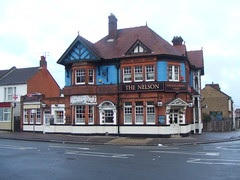
Nelson Pub North Road
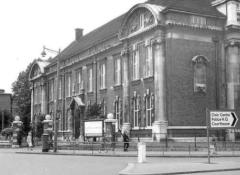
Southend Technical/Municipal School
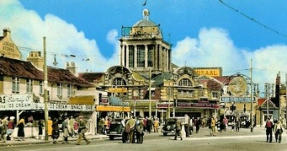
Kursaal Building
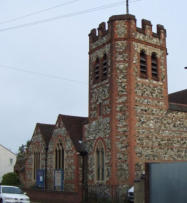
St Alban’s Church
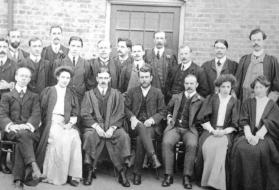
School Teachers Southend Technical College
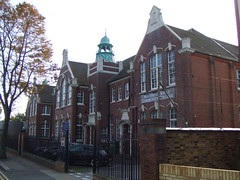
Southchurch Hall School

Bioscope Projector
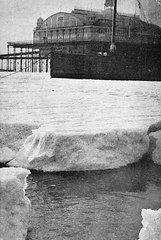
Frozen Sea at the Pier
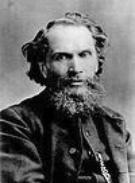
Rev. Benjamin Waugh
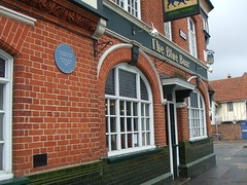
Blue Boar Public House
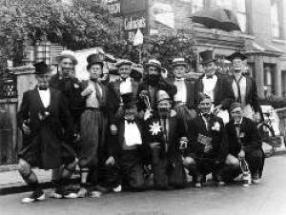
Carnival Supporters

Old Library Victoria Avenue
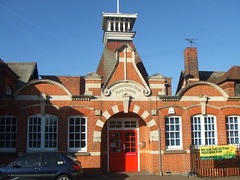
Bournemouth Park Road School
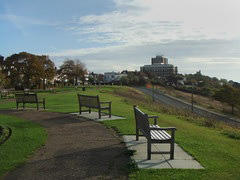
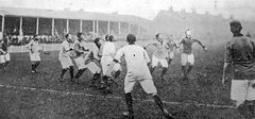
Marine Parade Leigh-on-Sea
Southend United
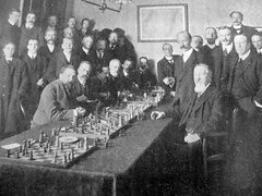
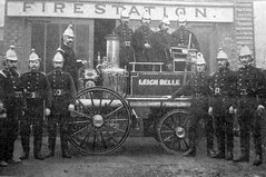
Mr Blackburne sitting on the right
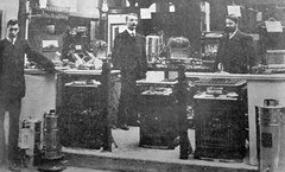
Trades & Commerce Exhibition The Kursaal
Leigh Belle Fire Engine



Website Info:

Southend-on-Sea’s No 1 History Website! Documenting The Town & The Townspeople
Now Incorporating The Sea Of Change Website


SOUTHEND CITY
Chalkwell ▪ Eastwood ▪ Leigh-on-Sea ▪ Prittlewell ▪ Shoeburyness ▪ Southchurch ▪ Thorpe Bay ▪ Westcliff-on-Sea
































































